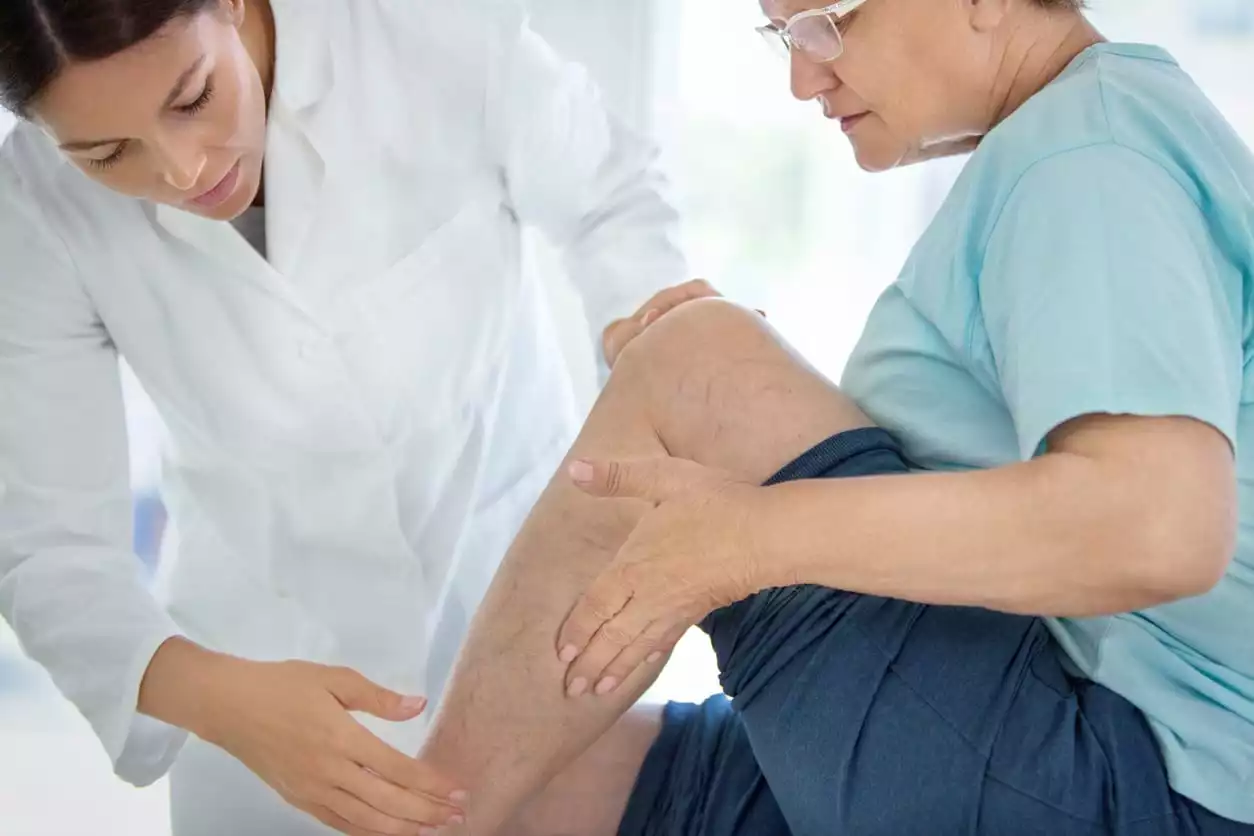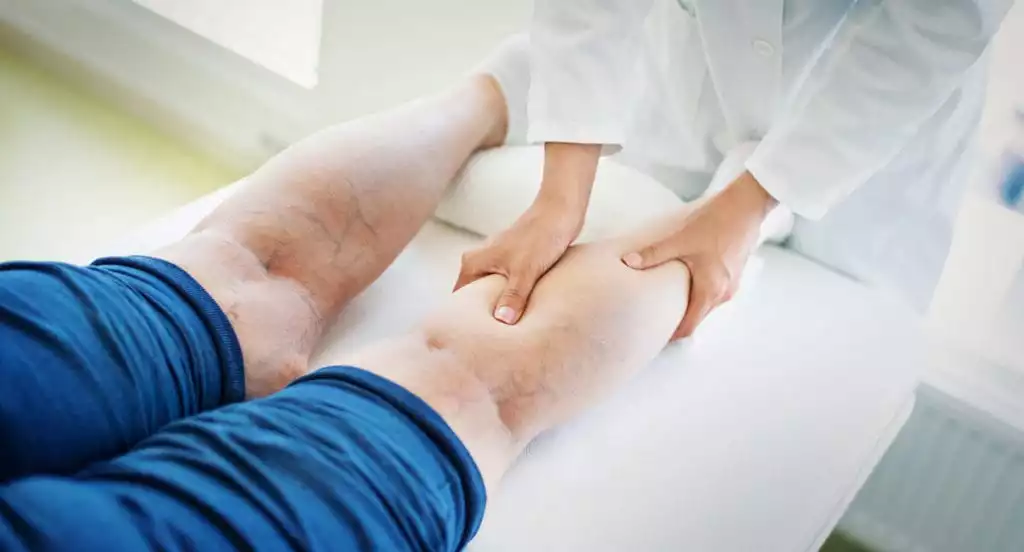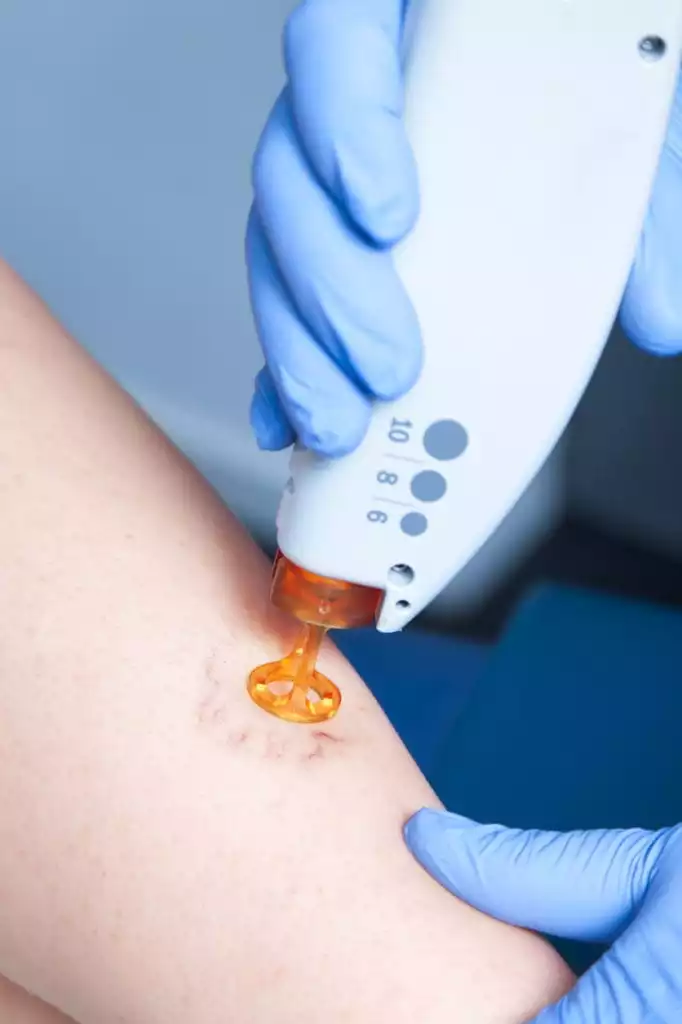
Varicose veins are veins that swell and/or lose their structure due to age, weight, pressure, or certain medical conditions. More than 40 percent of all Americans will suffer from varicose veins at least once in their lives. Women experience them at a higher rate than men, but gender is not necessarily a full predictor of development. Because so many people suffer from it, it’s important to understand the different types of varicose vein treatment options that are available.
Any vein in your body can become varicose, but most varicose veins are found in the feet and legs. Increased pressure on these areas of the body make it harder for blood to circulate and increase the risk for a vein to become varicose. This is mostly caused by walking, sitting, standing, gravity, and heightened downward pressure. Veins that develop under such conditions often become enlarged or gnarled, losing much of their structure or swelling enough to become visible to the naked eye.
Spider veins develop under the same conditions as varicose veins but are stereotypically smaller and milder. In a spider vein or spider angioma, tiny blood vessels break or swell close to the skin’s surface.
What do Varicose Veins Look Like?
Varicose veins and spider veins appear blue, red and/or purple just under the surface of the skin. Most patients consider them cosmetically undesirable, but some patients also experience pain, swelling, or even ulceration from advanced varicose veins. In contrast, spider veins have a spiderweb-like appearance; varicose veins are like snakes or ropes that lie bulging just below the surface of the skin.
Effects of Varicose Veins
In addition to the cosmetic effects, varicose veins often throb or cramp up, especially after extended activity. This symptom occurs because the valves in the blood vessels that are designed to keep the blood from moving back down into the legs have become weak, loose, or has even failed altogether.
When varicose veins fail, they stretch, causing fluid to leak into the surrounding tissues. Some patients experience bleeding under the skin, hematomas, or even bruising with collapsed veins, while others experience swelling that can make the legs feel heavy. Leakage of fluid into the surrounding tissues can also spur on an itchy rash or painful ulcers.
Traditional Varicose Vein Treatment
Research shows that varicose veins may be genetic. That means if you have a relative with varicose veins, you are much more likely to experience them yourself. Unfortunately, not every varicose vein treatment option is right for every patient. Some patients find topical pain treatments suitable while others will need advanced surgical procedures.
One of the oldest varicose vein treatment is called the stripping treatment. This surgical procedure involves the doctor inserting a flexible metal rod into the vein at your groin. The rod is then pushed through the entire vein until it reaches the end. The surgeon places a metal cap on the device and pulls the rod through the leg.
If the process of stripping sounds unappealing, you’ll be pleased to know that the procedure has fallen out of favor compared to newer strategies.
Another older but reliable treatment is ambulatory phlebectomy. During this procedure, the problem vein is extracted by a surgeon using a device that looks like a crochet hook. This quick process completely removes the problem vein, so there’s no need to wait for the body to reabsorb it like some other surgical methods.
Newer Surgical Varicose Vein Treatment
New varicose vein treatment has evolved to include a wider variety of treatment options. Varicose vein surgeons often use laser treatments to eliminate problem veins because they are fast, reliable, and less prone to side effects or complications.
Surgical lasers send tiny bursts of concentrated light to the vein, burning it on a microscopic level and causing it to collapse. The body reabsorbs the vein eventually, clearing it out.
Although some patients experience a small amount of discomfort during laser therapy, most doctors can give pain treatments. This may include numbing the skin with benzocaine or lidocaine or simply cooling it down afterward.
A newer varicose vein treatment called foam sclerotherapy is also gaining popularity. This method involves agitating an agent like an emulsifier or detergent with air until the solution forms a foam. It has the consistency of watered-down shaving cream. Surgeons carefully inject the foam into the varicose vein, causing its walls to swell before sticking together. The solution blocks off the vein and allows your deeper circulatory system to take over the management of your blood flow.
Foam sclerotherapy doesn’t work in every situation. Some doctors prefer to use foam sclerotherapy on spider veins, as they are smaller and the therapy is much more likely to succeed. These doctors believe that the large-bore vessels that make up varicose veins require a more aggressive strategy.
At-Home Varicose Vein Treatment
For many people, having surgery for a condition that is largely cosmetic is simply not an option. Fortunately, like many other health conditions, there are many strategies you can use right at home to reduce your risks for varicose veins or even relieve them once they occur.
One important key factor is to keep your Body Mass Index and/or weight within recommended numbers; being just 20 lbs. overweight is enough to place significant stress on the veins. Sticking to a diet that is both high in fiber and low in carbohydrates will provide your body with the nutrients it needs to keep your circulatory system working well, too.
Supplement Your Diet
Research shows that taking omega-3 oils may help to maintain blood vessel elasticity. Taking 100 mg of coenzyme Q10 may also boost tissue oxygenation and circulation. Vitamin K and ginkgo biloba supplements may reduce or relieve varicose veins, but these must be taken with care – both increase blood clotting which could increase your risk of a clot.
Get Moving
If varicose veins run in your family, it’s important to get moving as often as possible as a preventative measure. Although this isn’t a specific varicose vein treatment, it can help ease the pain of varicose veins, and help to prevent further damage. Avoid sitting or standing for long periods of time as it will increase pressure in the legs. When sitting, don’t cross your legs; it puts significant pressure on your veins that can cause them to collapse. Instead, rest your legs on a footstool or keep them flat on the floor.
During periods of rest, elevate your legs to a level higher than your heart. This will encourage the blood to flow out of your legs and reduce venous pressure.
When flying on long flights, make it a point to get up and walk around at least once every hour. Booking first class will also give you more leg room, making flying safer and more comfortable.
If you sit to watch tv or work on the computer frequently, you should try to take regular walking breaks. At work, use a standing desk or a backless, armless kneeling chair to change your position. Avoid being cramped and focus on good posture.
Wear Support Hose
If you already have visible spider veins or varicose veins, it’s imperative that you wear support hose or compression stockings during all your waking hours. It is also recommended that you wear such supportive hosiery if you’ve already had a surgical procedure done that addresses varicose veins.
In most cases, pressure hose should be custom-fitted to the patient for best results. Some doctors recommend that patients wear specialized support hose explicitly designed for sufferers of varicose veins. Other doctors feel that patients with mild conditions may do fine with supportive pantyhose instead.
With new varicose vein treatment options available, there are many things you can do to both prevent and treat your varicose veins.

 info@burtsrx.com
info@burtsrx.com


Thank you for you explanation of varicose veins. It is interesting that they look like red and blue veins on the surfaces of the skin. I was looking at my legs the other day. I just might have some I should get checked out by a doctor.
Thank you for all this great information about varicose treatment. One thing that really stood out to me is that surgical lasers actually help remove them. It’s nice to know there are different options for your varicose treatments.
Thank you, Frank! Yes, there are many options for varicose vein treatment! Don’t be afraid to ask if you need more insight!
When you talk about varicose vein treatments, you will be happy to know that the condition is very much manageable and a variety of options are available with a patient to choose.
That is a very important point, Lela! There are many ways to manage varicose veins!
My mom and grandma both had varicose veins. I’ll take your advice and start moving as much as possible to prevent it. If I end up getting them, I’ll have them treated as soon as possible.
Yes! Moving early can help! Thank you for your comment.